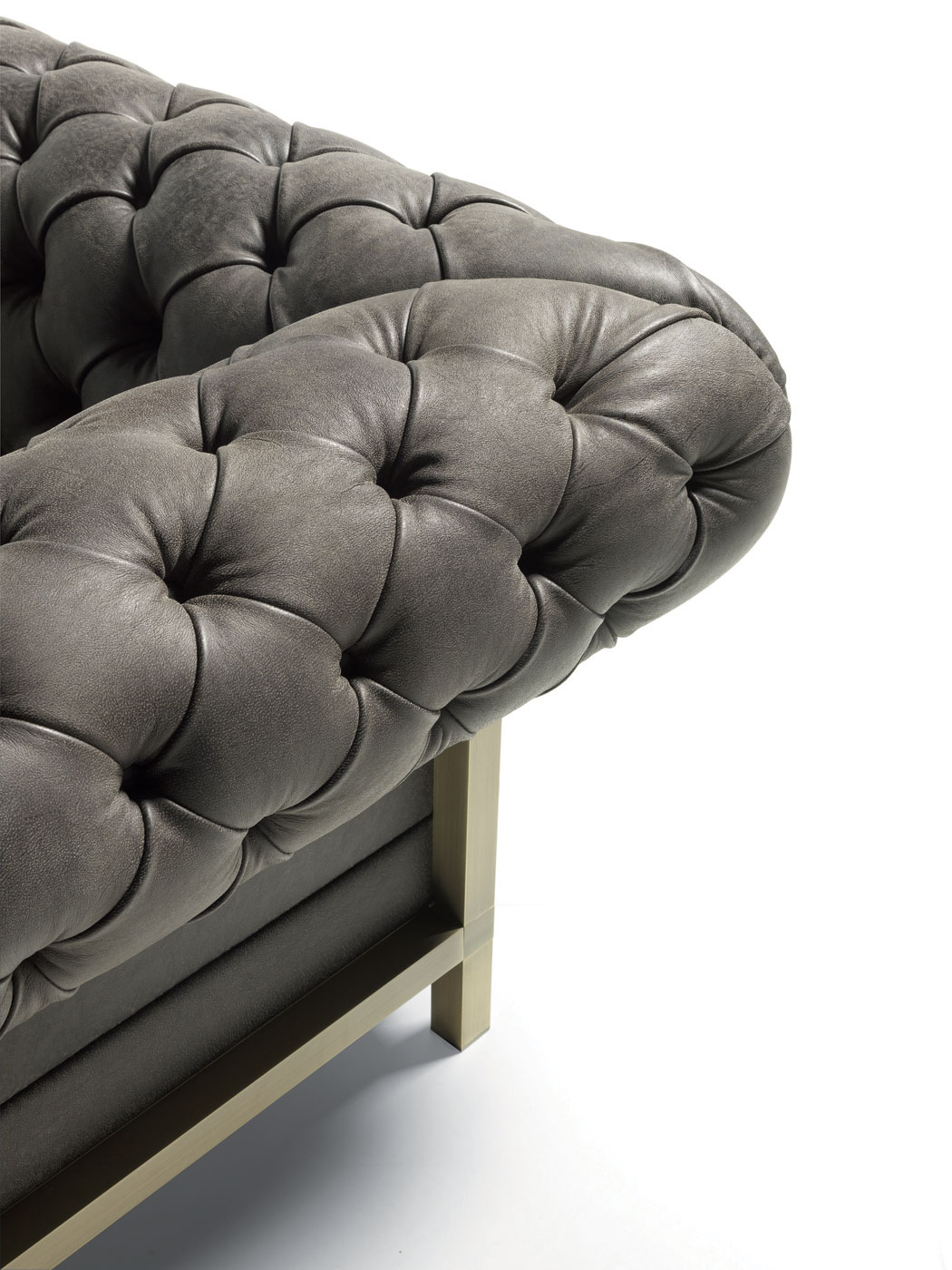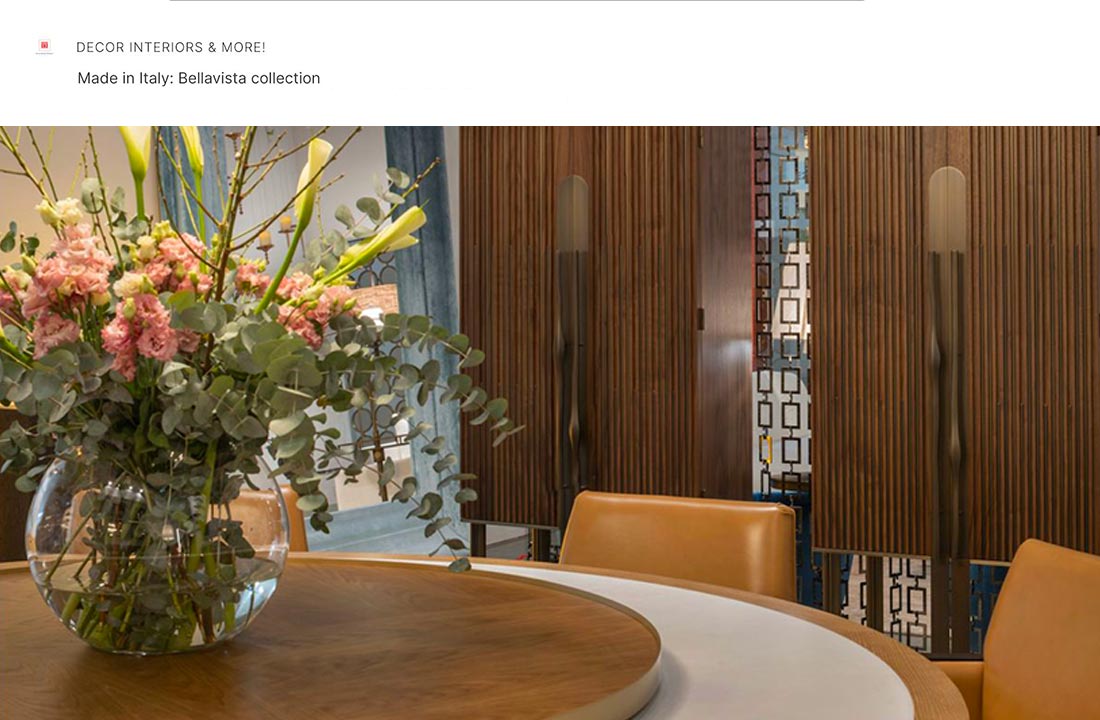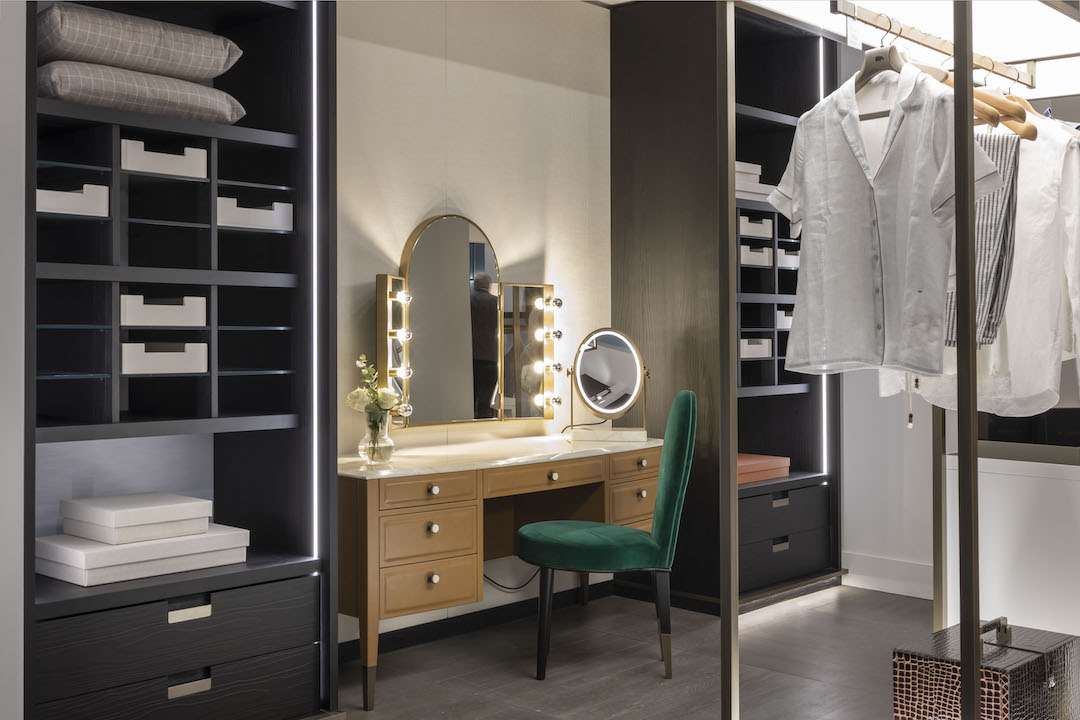When we talk of leather-upholstered furniture – sofas, armchairs, couches, ottomans, etc. – the very first words that come to mind are comfort and chic. Leather-covered furniture items are considered really prestigious ones: for many people, having a set of leather furniture is a sign of being well-to-do. Others appreciate its durability or just love its sleek classic-looking appearance, which adds elegance to a room.
That is why many high-end furniture producers offer both options. For example, most of the upholstered items offered by Bellavista Collection – the brand renowned for its Italian luxury furniture– are available in either leather or fabric.
Leather or Fabric?
Choosing between leather and fabric covering could be tricky, because both options have their own benefits and drawbacks.
On the one hand, quality leather is easy to look after. Just wipe it with a dry cloth and vacuum-clean it from time to time; apply a light leather conditioner a couple of times a year – and your leather furniture will look great.
Natural leather is hypoallergenic. Your leather-covered armchair or a sofa won’t become home to millions of dust mites, which proved to cause allergies.
Leather ‘breathes’, because it is a natural product. High quality leather always contains some water –about 12-14%. That is why, leather quickly adapts to the body temperature. By the way, genuine leather won’t make you sweat! Many people who say they’re sweating on leather (most often mentioning car seats), actually dealt with so-called leather products like bonded leather or even vinyl.
On the other hand, leather furniture pieces usually feel firmer than the fabric ones. So, some people consider fabric to be more comfortable than leather. Well, tastes differ.
Leather furniture shouldn’t be exposed to direct sunlight and heat, because it could permanently damage the leather.
Besides, leather items are more vulnerable to humidity, which make it less suitable for tropical climates. If indoor air humidity reaches 55 percent or higher, it could cause mildew on leather. On the top of that, there are tiny creatures that feed on leather – well, that’s the common weak point of most natural materials.
Real Leather is Unique
As we all know, leather for upholstery is made of animal hides. Quite predictably, surface of every hide is unique like a human fingerprint. So, no piece of leather looks exactly like any other, thanks to its natural grain with marks like fat wrinkles, scars, and veins. When the leather is dyed, the dye is absorbed throughout its cells in a different way, so its color will inevitably be slightly uneven.
Not all Leather Pieces are Equal
In short, there are three basic types of genuine leather: full grain, top grain, and split.
On average, a cowhide is about four millimeters thick, so the hides are sliced on special precision machines (pretty similar to veneering a log), giving two or three cuts below the top grain layer. These cuts are called split leather.
Split leather is the cheapest but the least strong type of leather. When split is coated with polyurethane, the resulting product is called by-cast. Since split leather stretches, the coating may crack in course of time.
The uppermost layer of a hide with remaining natural grain, which hasn’t been altered, is called full grain, or full top grain. Full grain leather is the most durable kind of leather but as a rule the most expensive. Only 10-15% of hides can be turned into full grain upholstery leather. It’s considered the best type of natural leather available; in short, that’s what consumers call ‘the real thing’.
If the top layer of a hide has been sanded and polished, such leather is called top grain. In this case, the grain is just an imitation, because the real grain has been sanded away.
Leather Products: Not so Genuine as They Look
Along with real leather, there are leather-like materials that look pretty much like leather, even smell like leather, and could be mixed up with leather – but they aren’t leather.
Bonded leather is an artificial material, which consists of ground up leather scraps and polyurethane (i.e. plastic). For example, a kind of bonded leather called NextLeather consists of 17% leather, 22% poly-cotton (mix of polyester and cotton) and 61% polyurethane. Avoid this material, because it doesn’t wear well. If a piece of furniture used regularly, its upholstery will start delaminating in a few years.
By cast is split leather with a polyurethane top coat finish, so it usually looks shiny. This material also has little to do with leather in terms of durability.
Leather gel is a relatively new man-made material: it was introduced to the industry just a few years ago. Similar to bonded leather, leather gel is said to be an improved material – but it’s far from real leather anyway.
Thus, if you want a real thing, you had better stay clear from these materials. In fact, producers of high-end furniture, including Bellavista Collection, do so. Italian luxury furniture it offers is upholstered with full top grain leather only.
Adding Color: How Upholstery Leather is Dyed
When making upholstery leather, hides are first tanned using chromium salts in large drums. It is worth mentioning that the oldest tanneries are located in Italy, Switzerland and Germany, so Italian tanners are among the best in the world.
In a nutshell, there are three basic methods of dyeing the leather for furniture. The dyed leathers are called Full Aniline, Semi-Aniline, and Pigmented.
Pigmented leather is the most common type of upholstery leather. The hide is dyed by spraying the colorant directly onto the surface, followed by a protective topcoat to ensure resistance to stains, spills, and scratches.
Full aniline and semi-aniline leathers are dyed with aniline dyes in a drum. The difference is that full aniline isn’t afterwards treated with a protective topcoat, so all the natural markings are visible. Full aniline leather is also called “naked leather.” Only the finest full grain hides can be dyed full aniline.
So, if you’re looking for furniture with first-class upholstery, pick full aniline or semi aniline leather.




